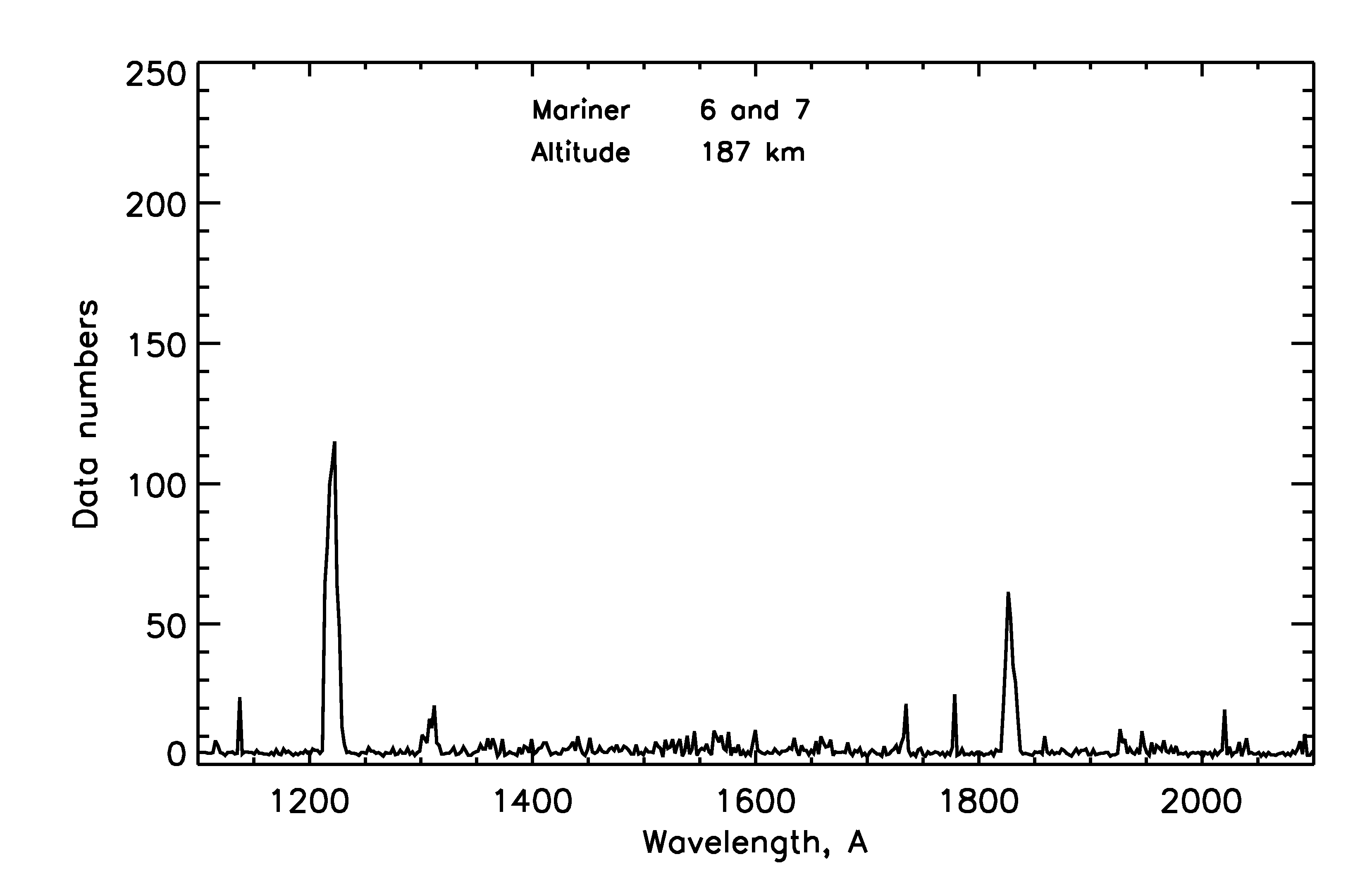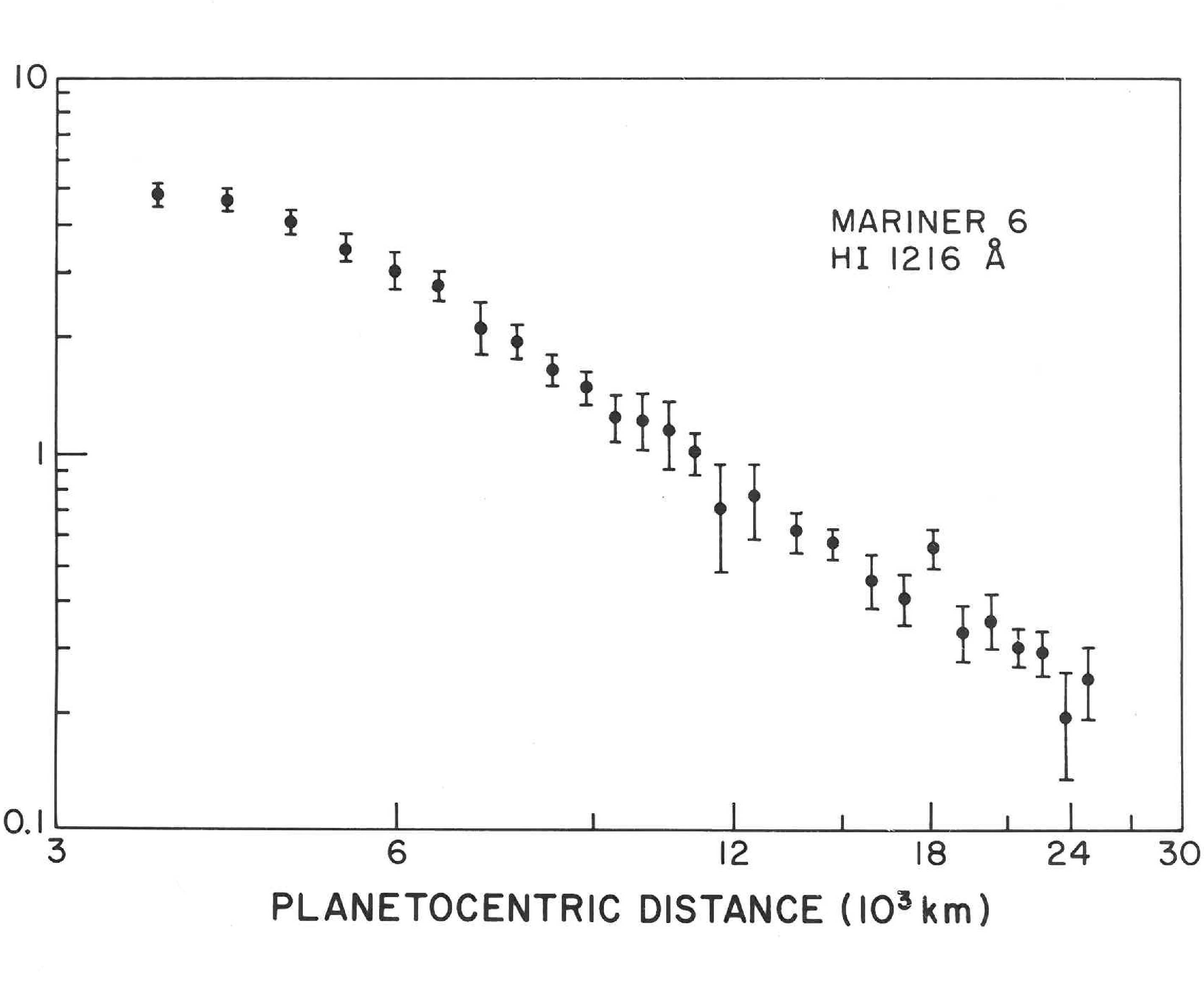First Observations of Atomic Hydrogen
Atomic hydrogen escaping from the Mars upper atmosphere was observed in the short wavelength channel of the Mariner spectrometer starting at a distance of 24,000 km from the center of Mars continuing until the tangent limb reached the surface. The short wavelength channel scanned from 1100 A to 2100 A in the second order. A spectrum obtained when the tangent limb was 190 km above the surface is shown below. This spectrum is the average of four limb crossings, two each from Mariner 6 and Mariner 7. The second order wavelength scale shows the Lyman alpha emission at 1216 A. Lyman alpha also appears in the third order at an apparent wavelength of 1824 A on the wavelength scale. The atomic oxygen line at 1304 A is also present.
The intensity of the Lyman alpha emission as a function of planetocentric distance is shown in the figure below which is taken from the published paper that first reported the results of the Mariner 6 and 7 fly-bys [Barth et al., 1971]. These data were analyzed using radiative transport theory and a model of planetary exospheres [Anderson and Hord, 1971]. The results indicated that the temperature at the base of the exosphere (250 km) was 350° K and the atomic hydrogen density was 3 x 10^4 atoms / cm^3.
The short wavelength limb spectra obtained during the fly-bys of Mariners 6 and 7 are also available for downloading. There are eight spectra for each spacecraft, for each channel. They are in two files labeled : Mariner6_G.dat and Mariner7_G.dat which are the G channel data. There are two more N channel data files: Mariner6_N.dat and Mariner7_N.dat They are in binary format and may be read using IDL. A set of procedures are available that will read these data files. They are named: plot_M6_7_g.pro (G channel), plot_M6_7_n.pro (N channel). The command line is plot_M6_7_g,m,n. The m designates the spacecraft: 6 for Mariner 6 and 7 for Mariner 7. The n designates the number of the spectrum in each file; 1-4 for the first limb crossing and 5-8 for the second. Record n=0 is wavelength.


